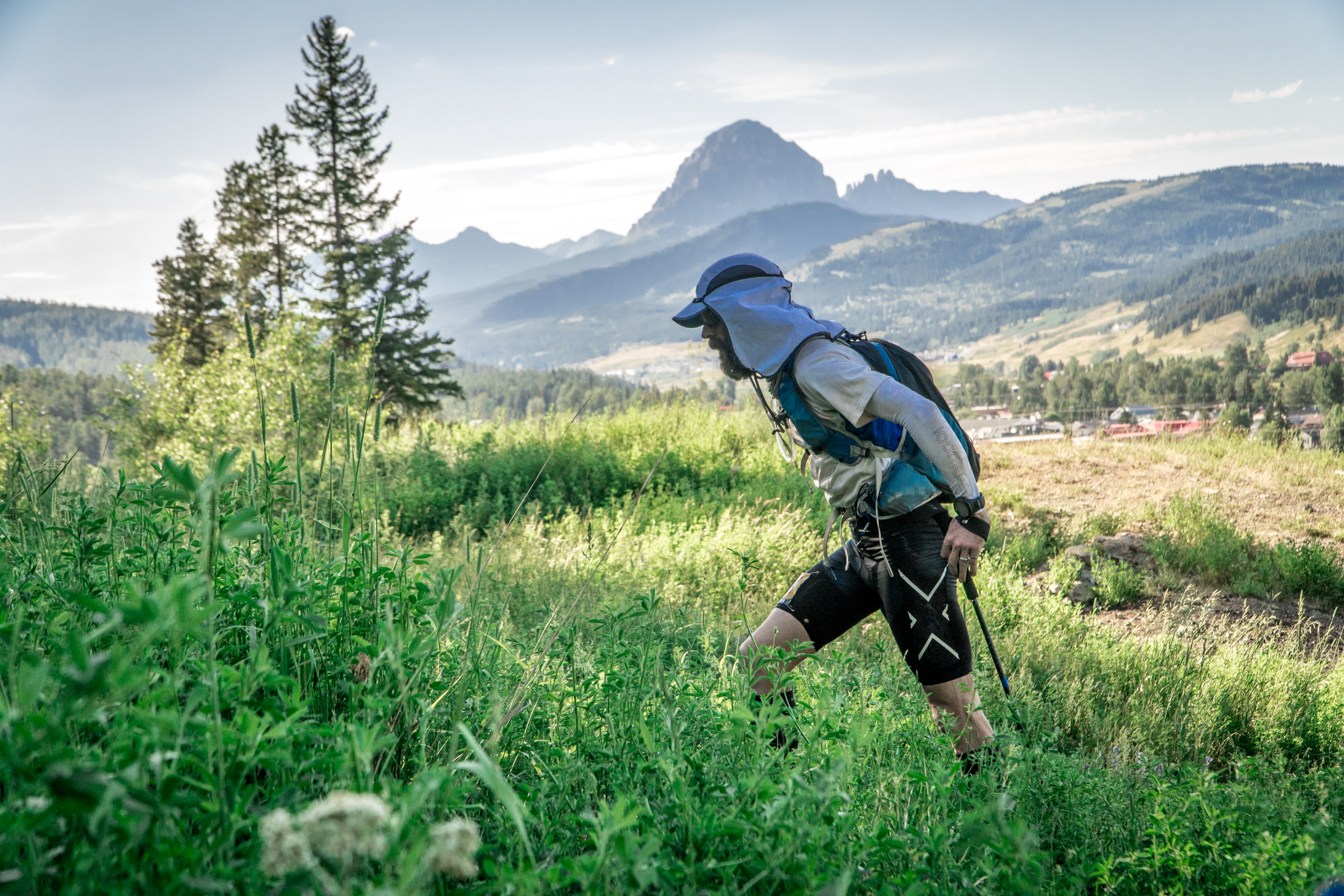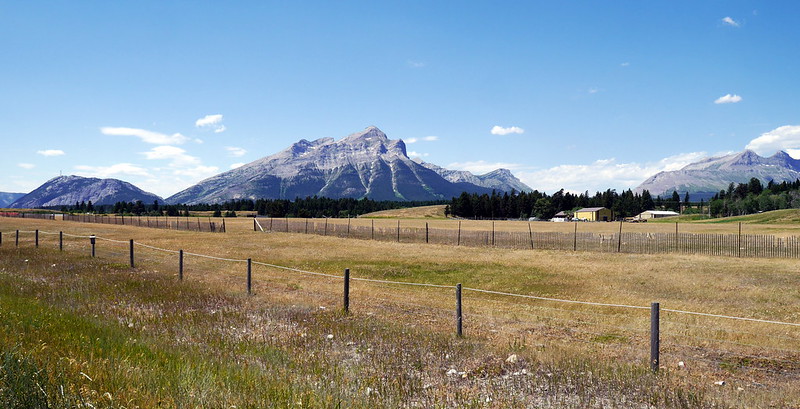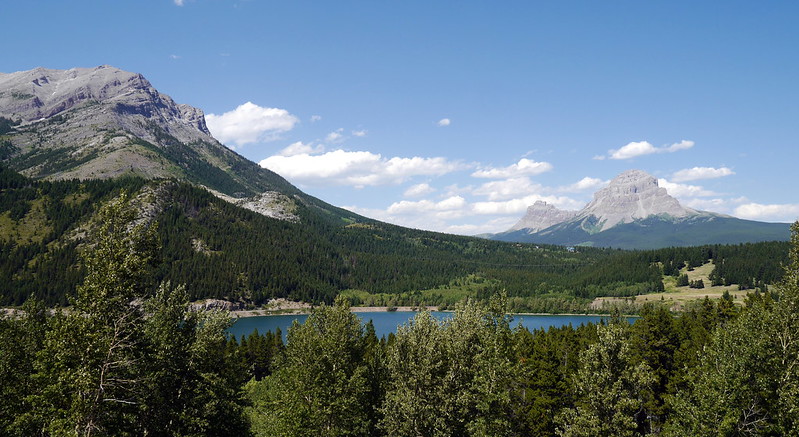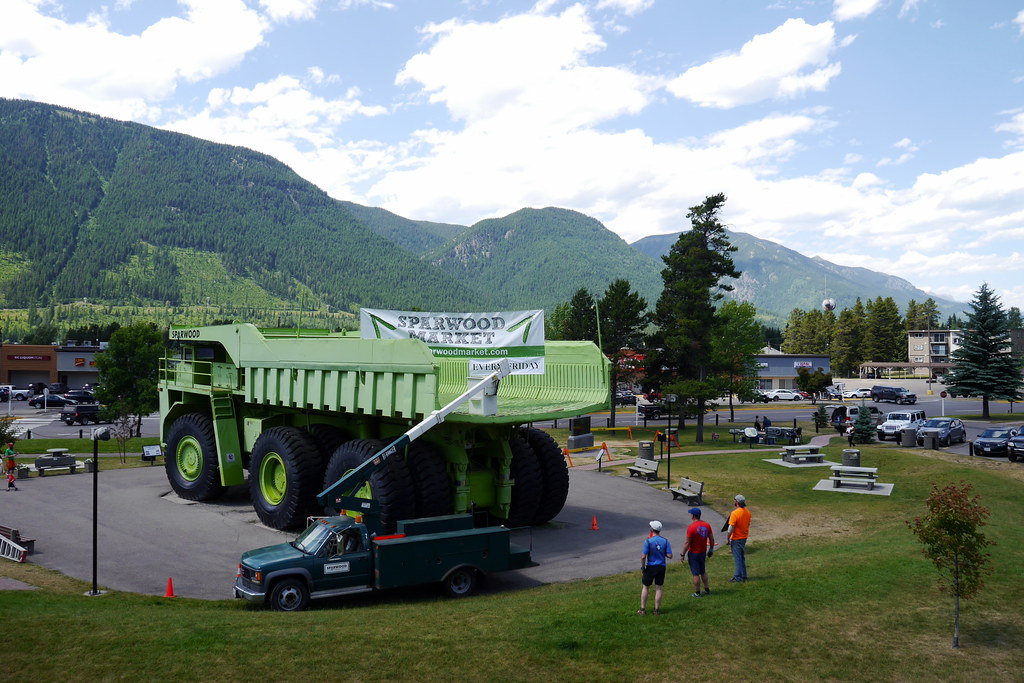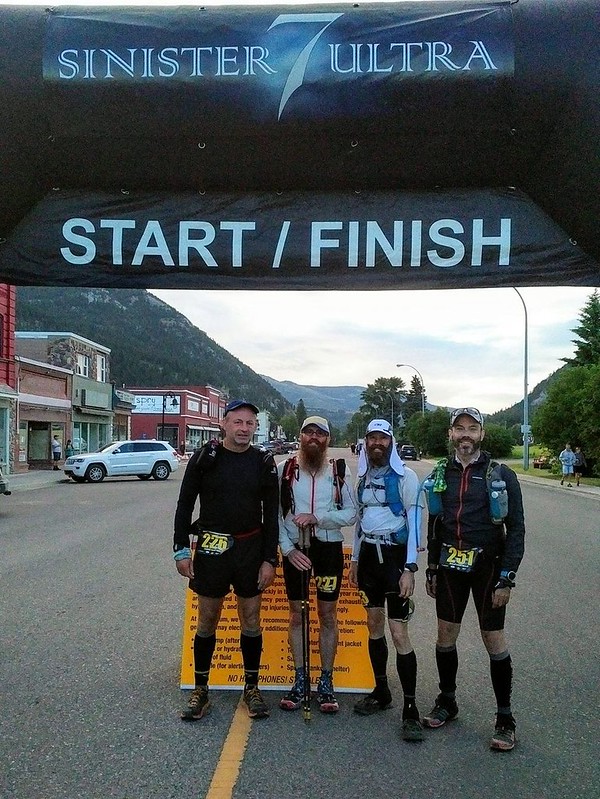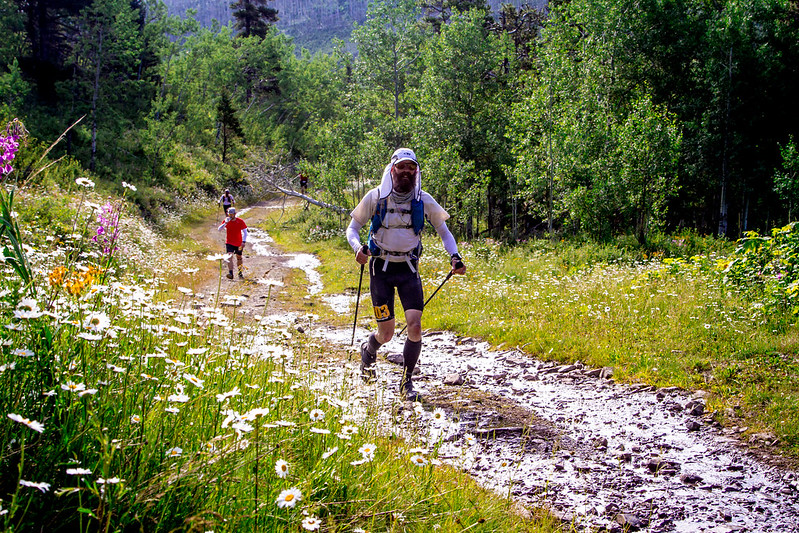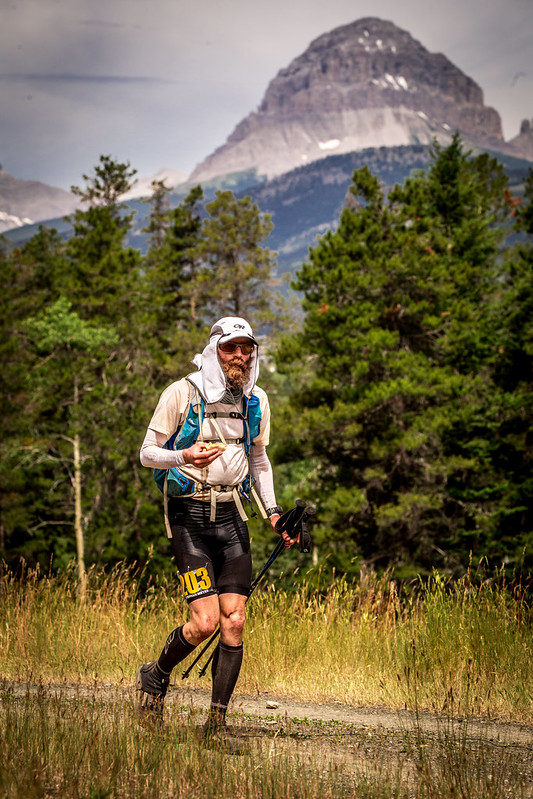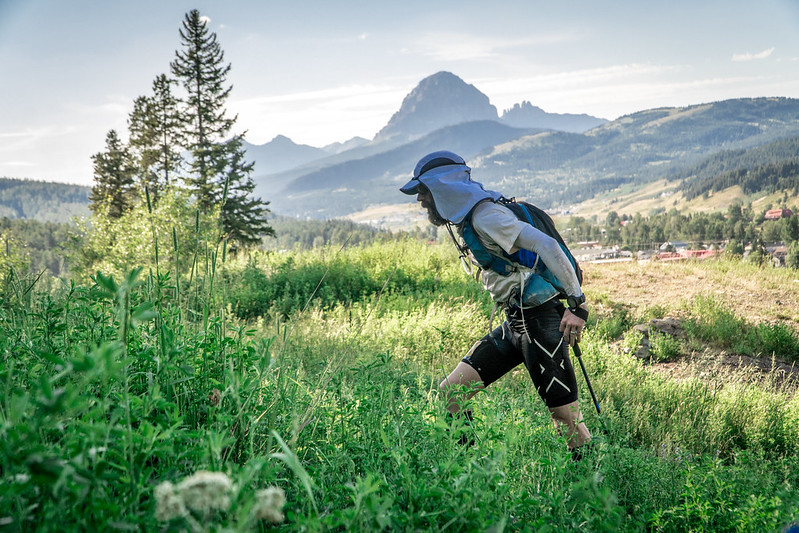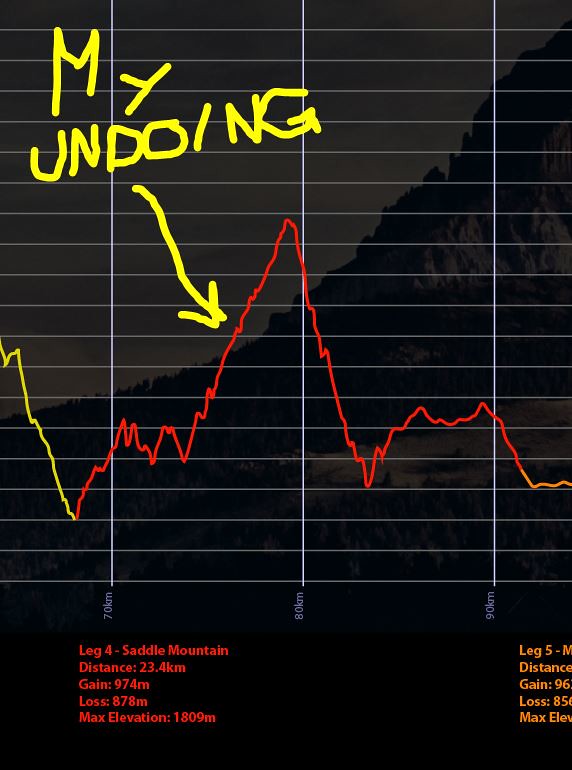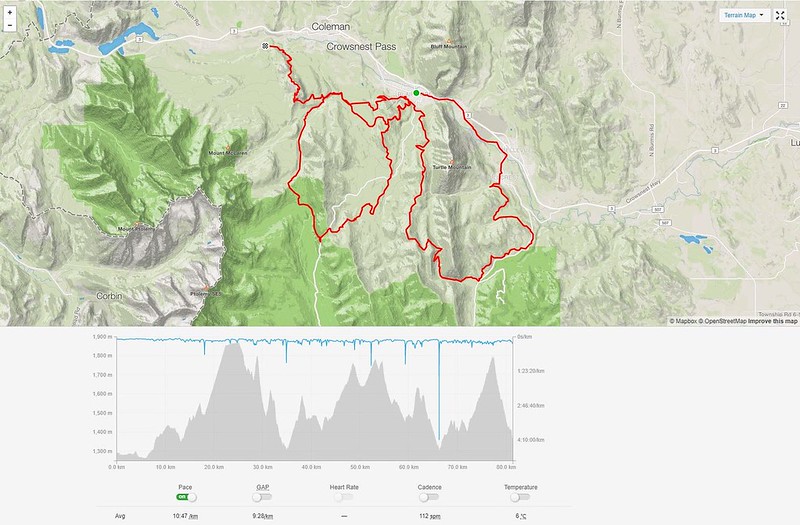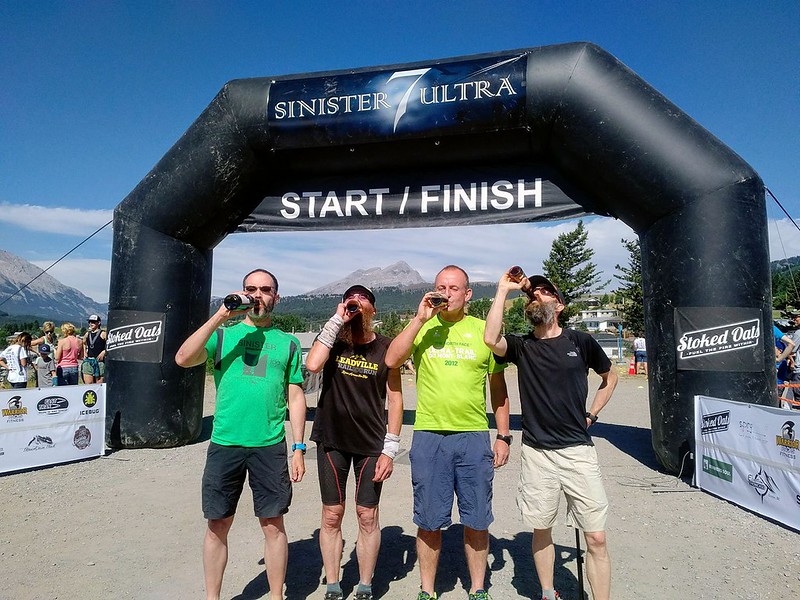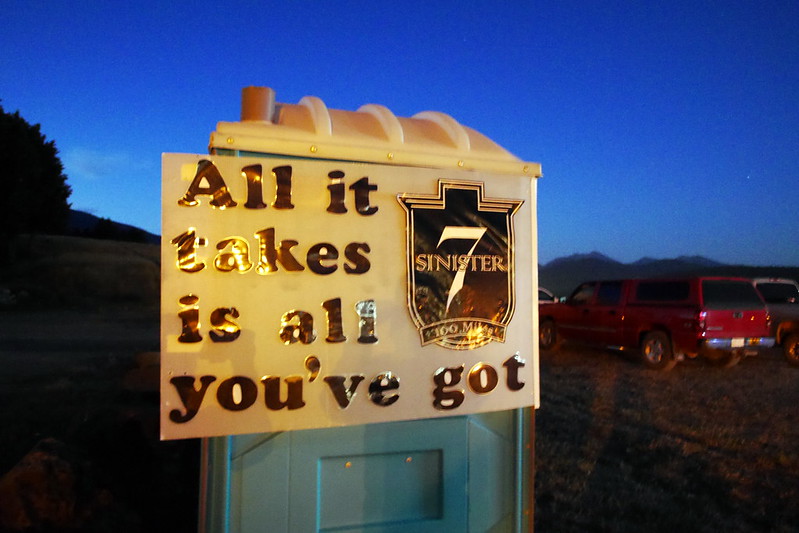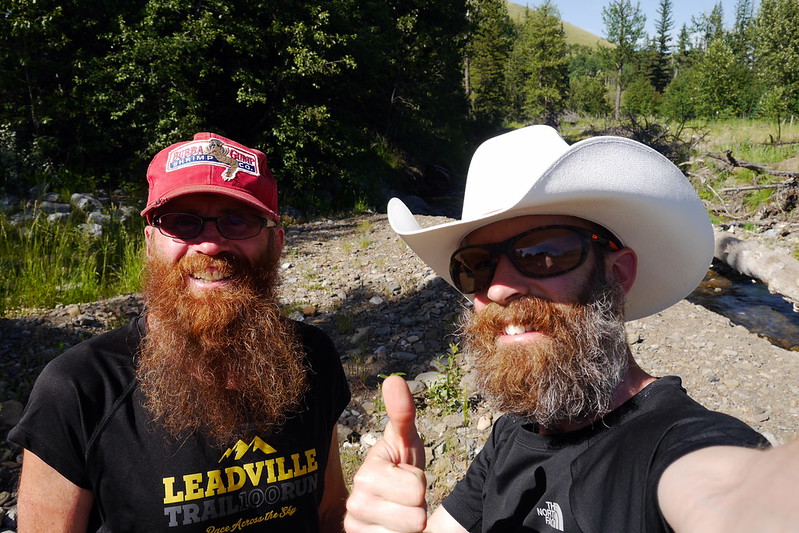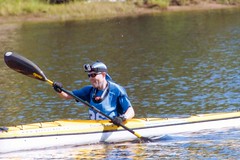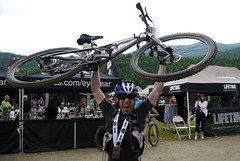I looked down at my watch again and did the math in my head for the thousandth time. I’d lost some time on this leg, but in theory, it was still *possible* that I’d be able to finish my first 100 miler within the 30 hour time limit. However, there were a few problems. First, it was nearing 10pm, and my headlamp was in my transition bag which was another mountainous 8km of singletrack away. In addition, I wasn’t actually sure when I had last ate or drank anything, and my whole body felt ‘off’. And so it came to pass that I had to make peace with my decision to pull myself out at the next checkpoint, at the 82.2km point in the race after having given it my all for nearly 15 hours. Ladies and gentlemen, welcome to my story of the Sinister 7 Ultra!
Two weeks have passed since I excitedly got to the start line, did some pre-race yoga and centered myself before launching into what I knew was going to be a tough race. It is high time that I share my whole story with you all. First off, there will be no excuses. I made my own decisions about this race, and feel that in spite of everything, I did show up in form to actually get this done. Yes, I have some leg issue that I’m awaiting an MRI to diagnose, and I hadn’t ran that much since my last 50 miler as a result, but I felt mentally ready, which in this kind of race counts the most.
Sinister 7 isn’t so much a race as it is a crucible designed to test your mettle. While the relay racer category boasts the higher numbers, it is the like-minded group of solos that make this race legendary. Celebrating its 10th year, this year’s edition was definitely the toughest by all accounts. The course had been tweaked, making it just a little tougher, and the weather this year was unrelentingly hot during the day. Given these conditions, less than 18% of the solos actually completed the event, so I was in the vast majority with my DNF, but actually got further than a lot of other racers. But why? Let’s examine.
First off, I was really excited to finally head out west in Canada for a race this year, and was actually re-tracing the footsteps of my immigrant father (but that’s for another story) by arriving in Calgary. Mountains always hold an allure for me, so the setting of Crowsnest Pass was ideal in my mind for a first attempt at the 100 mile distance in trail running. Never mind that this is one of the hardest hundred milers not only in Canada, but North America. As somewhat usual for me, in order to ensure there would be an audience for my success or failure, I was covering this race by producing a video for Get Out There Magazine (see epic final video below), which meant filming not only before and after my race, but during the race itself.
So, how could I make things even more challenging? Well, how about racing it solo and completely unsupported? That’s right, whereas the majority of solo racers would arrive at transition zones to hordes of family and friends there to cater to their every whim, I was on my own to fight through the people to get things like peanut butter sandwiches and water. Mind you, there were oodles of AMAZING volunteers willing to help how they could, but the added dimension of being self-supported is a challenge. However, typically, I thrive in such settings, so again, no excuses, and I relish that extra effort I had to make to keep myself motivated and moving.
The race itself is broken into 7 overall stages, each with their own difficulty ratings. The first to legs are on the ‘easier’ side, but make no mistakes, they are only on the ‘easier’ side compared to the other legs of Sinister 7, meaning they are also tough. Leg 3 of this race is the second longest and has the second most elevation gain, but when you get to it, you are tackling it in the middle of they day, and much of it is exposed. When you factor in that it was around 35 degrees that day, you quickly see why it claimed many victims this year.
I’m proud to say I wasn’t one of them. I had played my game carefully to this point. But let’s back it up. The day before, I did everything I could to stay focused and relaxed, hanging out with a few friends from home that were also racing. We took a nice ride to see some of the sights, including the worlds largest truck, as well as some of the course transition spots, to get a sense of the race. We had an amazing pre-race meal at the registration / race expo site. We were bandit camping in the woods right at the finish area, so we wouldn’t have to re-locate the next day after the race. I got a decent amount of horizontal time in my tent (I wouldn’t say I really slept much, but at least I was laying down).
We got up around 5am in order to catch a shuttle shortly after 6am to the start line, a short drive away. While warm early in the morning, it wasn’t sweltering yet. I’d made some last minute purchases to prepare for the forecasted heat, including cooling arm sleeves, a cooling buff, and a new white hat with a mini cape. The cooling gear was purported to produce coolness when it is wet, so I had high hopes for it.
At 7am, the race got underway, and I decided to reign in my speed, and pace myself by running with my friend Cal Mitchell, who is legendary in that he has actually completed the Grand Slam of Ultras, which is four 100 milers in a span of 2 months! If anyone knows how to pace in different conditions, it’s Cal. Plus, he’d completed Sinister 7 before, so had firsthand course knowledge. We ran side by side for much of leg 1, with me only pulling ahead a few times to grab some video footage. However, by the time we closed in on Transition Area 1, I had somehow gotten about 10 minutes ahead of him, so chose to cool off in a creek and await him. When Cal got in, it seemed he wasn’t having the best day, and he urged me to keep going without him, and just trust my own pacing.
I’d completed leg 1 in 2 hrs 18 minutes, only 12 minutes ahead of my planned pace. I left TA1 pretty much bang on my planned schedule. Leg 2 was a beautiful stage, with some gnarly climbs, but extremely rewarding views higher up, and a sweet section of trail on the edge of a hill with great sidelong views. The end of if featured some super fun twisty turning descents, and I felt pretty good. I was calm, heart rate under control, and nutrition and hydration completely dialed in. I cruised into TA2 (which we also see as TA3) feeling happy. Once again, I was exactly on pace, arriving at pretty much the 5 hour mark, giving me a theoretical 2 hour buffer when compared to the cutoffs.
Knowing that the next leg was going to be brutally hot, I made sure my 2.5L bladder was completely filled, and grabbed a couple peanut butter sandwiches before turning around and trotting back out. I didn’t touch my transition bag at this point, as I had all I needed. I was also making liberal use of my trekking poles, and they were pretty much a fixture in my hands for the rest of the race.
Although I haven’t mentioned other racers, I will note that throughout the day, there were plenty of great conversations, and trading footsteps with other hearty solo racers as well as relay team people. Although I’d spend lots of time alone, there always seemed to be people not that far away, so if you slowed pace, inevitably someone would show up to perk you back up. On Leg 3, this was much appreciated, as it definitely started feeling like a race of attrition. Temperatures were soaring, and it was starting to get very challenging to regulate my body heat.
Leg 3 (see full race leg descriptions here) featured a series of climbs and descents, with many of them quite exposed. To deal with the heat, I basically stopped at every single trickle of a stream to dump my hat in the water, soak my buff, and wet down my arms and legs. There was simply no escaping the heat, and we were still burning tons of calories, while not fully replenishing them. I have enough experience that I know what I need to do, but it was TOUGH to keep things in check. Luckily, I’d known Leg 3 was a critical ‘make or break’ stage, so I worked hard at managing everything.
I’d given myself a conservative 6 hours for this leg, and wouldn’t you know it, I cruised into the Transition Area at 5:58pm, having taken pretty much precisely 6 hours to cover this leg. I was happy to see I was racing exactly to my plan. This is absolutely key in a race like this. I made the decision at TA3 to take a little longer rest to change socks and shoes, giving me a chance to check my feet over. That’s when I discovered that somewhere in all the punishing downhill runs, I’d *finally* managed to nearly completely dislodge one of my big toenails. As a result, I ended up spending over 25 minutes in transition while I waited for a medic to remove the toenail and associated lingering tissue (yes, I know, yuck!), and then completely patch it up to prevent infection later.
I would say this was the start of my undoing in the race. You see, instead of taking the time to properly eat and drink in the aid station, I was stuck sitting in a chair while they worked on me. Then, anxious to make some time back up, I abruptly headed back out. Yes, I’d re-filled on fluids, added food to my pack, but I should have eaten and drank a bit more while in the relative calm of the transition. However, given that I’d been right on track, I knew I had to get moving.
In my mind, Leg 3 had been the ‘beast’, and Leg 4 would give me a reprieve. This was my second fatal flaw. I had not actually studied the course / leg profile, and was therefore not intimately aware with what was awaiting me. I won’t make that mistake again. With the hot temperatures still sitting with us well into the evening (it was now around 6:30pm), I set out at a modest pace, and attempted to eat and drink a bit on the first climb (since you’re forced to hike anyway). I marveled as a couple young gents blazed past me, but realized they were clearly relay racers with fresh legs.
In all honesty, it’s tough to truly recall that much about Leg 4 even now. Looking back at the profile, I now understand why I was losing my mind. There was a MONSTER CLIMB that I totally didn’t count on. This essentially killed my mental state. I hit a very deep low, and couldn’t seem to climb out of it. The longer the climb lasted, the more I felt like this was completely unnecessary suffering, and I wanted it to end. Even once I FINALLY reached the top, I was in a funk. That’s when I realized I’d more or less stopped eating and drinking, and had no desire to try to get back into that groove.
Looking at my watch, I also realized I’d lost over an hour as compared to my plan, which further dissuaded me. In reality, even with my conservative plan, I’d left 2 ‘spare’ hours for unforeseen challenges, but I felt it was too ‘early’ to be using those up. After all, the hardest leg is Leg 6, and I was a long way from there! Due to the lost time, I also made the realization that I wouldn’t finish this leg in the daylight, and I had made a STUPID last-minute to move my headlamp from my TA3 bag to my TA4 bag, meaning I’d be stuck finishing this leg without light. If you’re keeping track, that was fatal flaw #3!
All of these circumstances culminated in my mentally throwing in the towel. During the slow, arduous descent to the next checkpoint, I convinced myself that I was going to pull out at the next checkpoint. I rehearsed what I’d say in my mind, and even thought I was at peace with it. I’d managed to race just over half of the course, and while not completely broken, I had some concerns around residual impacts of continuing, and also the very real risk of having an accident thanks to clumsy feet and no light on the final section of the leg. Oh, and I would be remiss if I didn’t add that the BUGS WERE ABSOLUTELY INSANE on this leg!! Another person at the checkpoint basically quit because of the bugs alone!
And so it came to pass that I pulled the plug at CP4B in Leg 4, having covered just over 82kms in just under 15 hours. The 2 volunteer staff there were great, they were completely neutral when I said I was pulling out, stating it was definitely my decision, and they’d respect it. But at the same time, they actually offered me a headlamp if I wanted to continue. A little part of my brain immediately tried to speak up and say “Take it. Keep going. You’ll make it to TA4 and re-group”. Unfortunately, it was too late, the bigger, meaner part of my brain had already bullied me into submission. I should have listened to the littler part of my brain. That was the REAL me. The one that keeps going in spite of the odds. Had I done so, I would have learned that there were warm meatballs and soups awaiting me at the next transition, along with other clothes if I wanted, and my amazing headlamp to keep me going.
However, as I write this, we know hindsight is 20/20. I have to live with my decision. And unfortunately in this case, that’s what it was. My decision. I hadn’t been cut off. I hadn’t suffered some terrible accident or injury. I was just ‘off’. And that, friends, is humility. As I will always tell people, you learn as much from failures as you do successes, so I will spend the next year (or 2, or 3) learning my lessons and doing my homework until I return to Sinister 7 once again for a shot at my redemption!
Interestingly, yesterday, I read a very relevant article making the case for why quitting is sometimes the best decision. While a long read of itself, I highly recommend giving it a read. It’s an overall life lesson, not race-specific. Read it here. One line that struck me towards the end was:
“Use trying and quitting as a deliberate strategy to find out what is worth not quitting.” – Eric Barker
In some ways, I feel this very succinctly encapsulates the entire reason why I get into these situations and tackle things like overly ambitious long-distance races. I’m on an eternal quest to determine what is worth not quitting.
Right. Well, I’ve made you all stick with me long enough to share this tale, but it was one I have been re-hashing in my mind for the past two weeks and was anxious to share it with you all, so let’s wrap things up!
So, what did I do after dropping out? In a nutshell, waited around for a drive back to the finish. Upon arriving, I learned that all 3 of my buds had also dropped out. They were all sitting in lawn chairs near the finish, enjoying beers, and essentially just waiting to learn of my fate. They poked fun at me, I had a shower, ate an amazing burger from a food truck that had set up at the finish and stayed open ALL NIGHT, and dusted myself off. I tried to sleep, but couldn’t, so I hobbled back down to the finish line from 2-4am to cheer in finishers, then back there again from around 6:30am until the 1pm cutoff to cheer in the very last solo racer. It was a girl I’d ran with a fair bit in the middle of the race from Utah.
Her race? Well, she crossed the line at 30 hours and 4 minutes, so was officially a DNF (did not finish). No belt buckle, no wine, no official finish, even though she had persevered and completed the entire course. That’s the bitch of it all. If you don’t finish by the cutoff, you are not an official finisher! Just try to put yourself in her mind at that moment. Delirious, having given everything, only to be told you were 4 minutes late after 30 hours of racing 160 grueling kilometers in the mountains!
Needless to say, I congratulated her, gave her a hug, and turned away choking back my own tears for her predicament. Ultras are emotional beasts, and I guarantee they can put anyone in tears in the right circumstance.
For my part, I made the best of the rest of my vacation, enjoying a couple more days with my friends, including a remote night camping completely disconnected from the world, and a very memorable day / night in Calgary and at the Stampede. Mark my words people. I. WILL. BE. BACK. Till I am, sit back, and enjoy the video I made of my experiences! Next up, Squamish 50/50 in a few weeks, where I plan on at least earning myself a truckers’ hat. One DNF is enough in a season, right??

